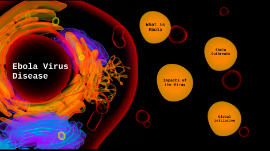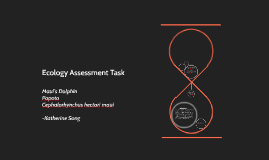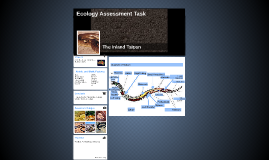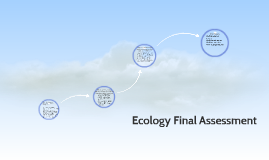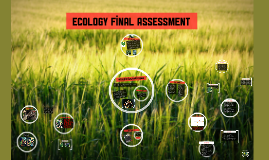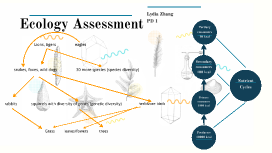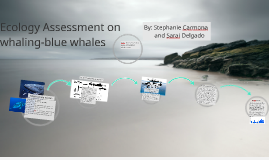Geo Assessment: Ecology
Transcript: Ebola Virus Disease Ebola Virus Disease (E.V.D) is a highly infectious illness that originates from wild animal and contracted by direct contact, such as: bodily fluids, infected objects, certain animals that have E.V.D (Fruit Bats, Primates), or through intercourse with a person who has recently recovered from Ebola (Oral, Vaginal, Anal Sex and Sperm). What is Ebola What is Ebola? The Ebola Virus Ebola Outbreaks Ebola, or E.V.D, is a virus that is contracted through physical contact. Cases for this virus is predominantly found in Africa and the most recorded cases of E.V.D was Sierra Leone. Country with the largest amount of deaths in Africa is Liberia, with just over 4,800 fatalities. First Wave The First wave of Ebola occurred in 1976, and first started to become damaging when it infected and claimed the lives of just under 90% of the small remote village of Yabuku, Zaire. E.V.D took the lives of over 200 people. First Wave Today's Virus Modern Day As of recently, a new outbreak has occurred, taking the lives of over 2200 people and infected 3456 people, confirmed on the 10 April, 2020. This new outbreak has appeared in the Republic of Congo and is still dangerous. The Impacts Impacts of the Virus The impacts that E.V.D that it had on African Countries include: Less Employment Transport was shut down Decrease in Mining Productions Other countries giving resources to help combat Ebola Population Fatalities Heavy impact on Economic Stability The Effects The Effects of Ebola on Africa The effects that E.V.D had on Africa still affect its daily functionality today. During the outbreak of 2014, Africa lost an estimated $2.8 billion USD and also lost major loss in trading, agriculture and sponsorships from outside nations. The early term effects the Ebola Virus include the restriction of people to their homes, panic between people. Global Initiative Global Initiative The effects of E.V.D have spread out to the outside world and to other countries. Some countries also reach out and give money to support Africa. There were also countries that received damage from Ebola, such as the US, Spain, Italy and more, as patients infected with Ebola cause problems in the stated Countries. References Cdc.gov. 2020. 2014-2016 Ebola Outbreak In West Africa History Ebola (Ebola Virus Disease) CDC. [online] Available at: <https://www.cdc.gov/vhf/ebola/history/2014-2016-outbreak/index.html> [Accessed 18 June 2020]. Who.int. 2020. Ebola Virus Disease. [online] Available at: <https://www.who.int/news-room/fact-sheets/detail/ebola-virus-disease> [Accessed 18 June 2020]. Publichealthintelligence.org. 2020. Chronology Of Ebola Virus Disease Outbreaks, 1976-2014 Health Intelligence. [online] Available at: <http://publichealthintelligence.org/content/chronology-ebola-virus-disease-outbreaks-1976-2014> [Accessed 18 June 2020]. staff, f., 2020. Ebola Virus Disease (EVD) - Symptoms And Causes Familydoctor.Org. [online] familydoctor.org. Available at: <https://familydoctor.org/condition/ebola-virus-disease/> [Accessed 18 June 2020].






